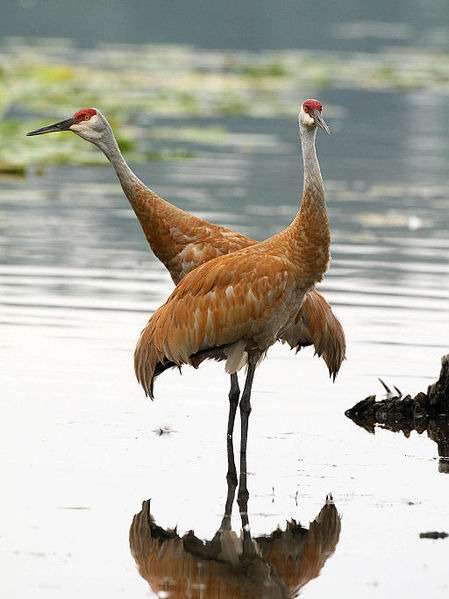The sarus crane is a large nonmigratory crane found in parts of the Indian subcontinent, Southeast Asia, and Australia. The tallest of the flying birds, standing at a height of up to 1.8 m, they are a conspicuous species of open wetlands in South Asia, seasonally flooded Dipterocarpus forests in Southeast Asia, and Eucalyptus-dominated woodlands and grasslands in Australia.
Sarus crane
In flight, the black primaries contrast with the otherwise grey wings (Bharatpur, India)
All cranes have a raised and much reduced hind toe.
Foraging in marshland (Bharatpur)
Cranes are a type of large bird with long legs and necks in the biological family Gruidae of the order Gruiformes. The family has 15 species placed in four genera which are Antigone, Balearica, Leucogeranus, and Grus. They are large birds with long necks and legs, a tapering form, and long secondary feathers on the wing that project over the tail. Most species have muted gray or white plumages, marked with black, and red bare patches on the face, but the crowned cranes of the genus Balearica have vibrantly-coloured wings and golden "crowns" of feathers. Cranes fly with their necks extended outwards instead of bent into an S-shape and their long legs outstretched.
Crane (bird)
The bare area of skin on the face of a sandhill crane can change colour or even expand in area when the bird is excited.
The long coiled trachea that produces the trumpeting calls of cranes (sarus crane, Antigone antigone)
Grey-crowned crane (Balearica regulorum) in captivity at Martin Mere, UK








